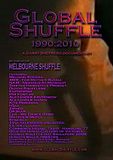Zunguzungu does it because he doesn't want to appear to be the typical tourist. I do it out of guilt. Deep in my heart, I know photography of strangers (especially those belonging to marginalised groups) is wrong. And I think the argument why could be an interesting analogy for music as well.
 I've not read that Susan Sontag book (though I'd like to). But I'm a journalist by training and our photography course was a real eye opener to the profoundly undemocratic nature of photography.
I've not read that Susan Sontag book (though I'd like to). But I'm a journalist by training and our photography course was a real eye opener to the profoundly undemocratic nature of photography.The subjects of a photojournalistic shot have absolutely no power. Subjects can't, short of violence, prevent the photographers from depicting them any way they chose, and there's an incredible array of semiotic signifiers at the photographer's disposal to control precisely what message the subject conveys. By framing, colour manipulation, depth of field, reflections, depth perception, the photographer can chose exactly what a photograph says, whereas the subject has no say. It's the photographer that choses the "best frame" to tell his story, and can discard all the rest. And it's the photographer who benefits, gets the credit, earns any money the photograph makes.
Were it resources and not mere images we'd be talking about it would rightly be called neo-colonialism. Two parties collaborate, but only one reaps all the profits, only one decides what product to make, only one is the person the photograph is for. And so to dull our shame we stand back so they can't see us and don't get angry with us, or alternatively make it explicitly clear what we're doing by posing.
The music analogy, if you've been following my blog, should be fairly clear by now - the "collaborations" of world music are very much like posing, because everyone involved knows that the power and interest only lies with the dominant party. Since the production, distribution and market are all in europe and north america, all power essentially rests there, too. And isn't it the case that the kind of musical tourism where we only pick up random MP3's off the internet is pretty much photography from a distance? Still the power of choice is ours. The DJ, like the photographer, is perfectly able to pick only those shots that confirm his world view. And it's not like we let them DJ for us.
 Still. Photography, and DJing, has a very great appeal, the creative and documentarian rush is too great to stop it. But in order for it to be properly ethical, it needs to be much more democratic.
Still. Photography, and DJing, has a very great appeal, the creative and documentarian rush is too great to stop it. But in order for it to be properly ethical, it needs to be much more democratic.There's a lot we can learn here, I think, from Malian photographer Seydou Keïta and the later photography of compatriot Malick Sidibé. Here the collaboration is very clear with definite creative input from both parties, and the photographs are posed for the benefit of the subject and to make the subject happy. And indeed both parties explicitly benefit. Sure, part of it is because it's a much more egalitarian and familiar form ("joking cousins"). But part of it is actually a deep respect, a "clientism" if you will (from the link above) where you let the subjects decide how they want to be depicted. Maybe that's a lesson we need to think about in music as well.










































1 comment:
Cheers! Interesting stuff, too; I'm going to have to mull.
Not wanting to be the typical tourist is a guilt thing as well, for exactly the reasons you lay out. But I also think that guilt can be taken a step too far, and the example of Keïta and Sidibé is right on point: the goal shouldn't be to not take pictures of strangers, but to recognize the ethics of doing so and try to adapt.
In that vein, when you say that "Subjects can't, short of violence, prevent the photographers from depicting them any way they chose, and there's an incredible array of semiotic signifiers at the photographer's disposal to control precisely what message the subject conveys," I feel the force of what you're saying, but I also think you've painted too extreme a picture. Violent power hierarchies might exist, but the subjects of photographies sometimes do have a certain kind of power that no photographer can quite erase. The thing about photography is that it pretends to be a completely passive and objective, and even though the intervention of people like Sontag was to think about all the ways it isn't (and is completely on point to do so), there is still, nevertheless, something to the fact that the photographer can only photograph what's there. You can manipulate an image to a certain extent, but there's a point beyond which you can't go. And many photographic subjects have more power over the final image than the photographer would like them to have. All of which is only to say, I’d like to keep it an open, nagging question as much as possible; better to ask if I’m guilty constantly than simply to feel guilty; the first might prevent me from making the same mistake twice, while the second I’m less sure about. Gotta think on it, as I said.
Post a Comment